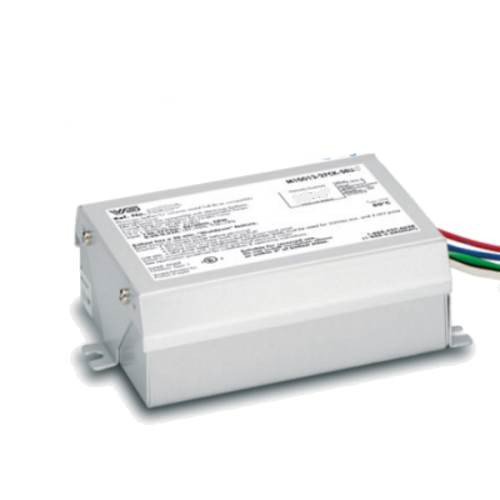Product Overview

Vossloh Schwabe M1501227CK5EUJT3 Multi-volt IDTP 150W Metal Halide Electronic J Stud Mount Ballast & Bottom lead exit Use To Operate (1) 150W M142/M102 Ceramic Metal Halide Lamp
Product Details
- Resonance Start
- RoHS Compliant
- Active power factor correction
- Microprocessor controlled
- (J) Stub mount (bottom lead exit)
- Compatible with 3 or 4 wire IDTPs
- Extra-long 36” Wire lead lengths
- Universal Order Code 188989.05
- Ansi Code C102,C142, M102,M142
- Voltage : 120-277V +/-10%, 50/60Hz
- DIM: (L) 5.02in (W) 3.62in x (H)1.57in
- IDTP "tap" Function: Provides 120V to heaters of IDTPs.
- Operation with IDTP is now universal voltage rated for 120-277V.
- Can be operated as normal HID ballast with tap lead capped-off
- for entire 120V to 277V input voltage range
- 5-Lead Wires (Black, White, Green,Blue, Red)
- Spec Sheet
Additional Information
- Energy Efficient
- Greater than 20% increase in efficiency
- Lowers lighting operation costs
- Full Light Output
- Provides same light levels as magnetic ballasts being replaced
- Quiet Operation
- Significantly quieter than magnetic ballasts
- High Frequency Operation
- No lamp flickering
- Light Weight - Low Profile Case
- Simplifies transportation & installation
- Less interference with ballast channel cover during replacement
- Slimline Ballasts Feature Parallel Lamp Operation
- When one lamp fails, other lamp remains lit
- Instant start electronic ballast for long lamp starting cycles and low initial cost
- RoHs Compliant
- UL Type 1 Outdoor
Performance:
• EOL Protection
• Meets ANSI Standard C82.14-2006
• Meets ANSI Standard C62.41-1991
• Meets FCC Part 18C for EMI & RFI (non-consumer)
Safety:
• No PCBs
• Thermal Protection
• C/UR/US recognized component
Each lamp's lead wires must be run in a separate minimum 1/2" ID conduit from the input
leads to achive good EMI performance and maximum remote capabilities. Individual ,
unbundled lead wires must be used for extension wiring using wire types SF-2 or SFF-2
or equivalent. Power cords and MC cables are not acceptable extension wiring methods.











